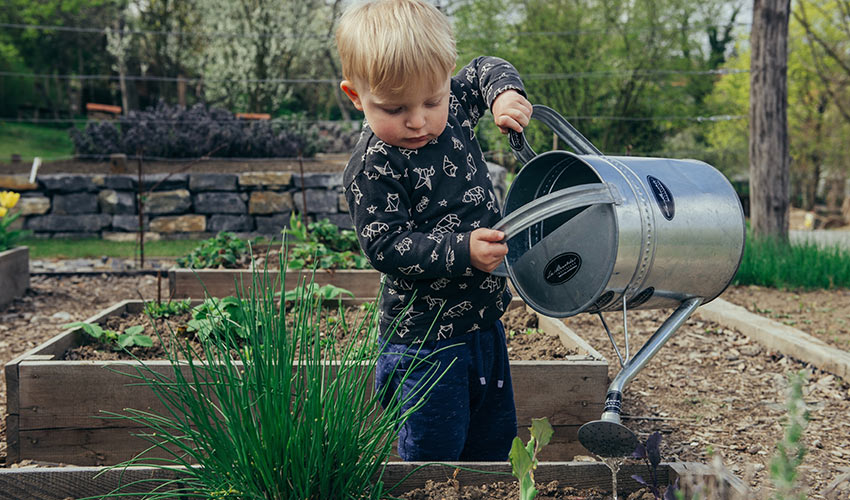The Positive Impact of Plants in your Home
Who doesn’t love to have some oxygen-providing plants in their home? Plants are an essential addition to any home, and with the approach of summer, it is the perfect time to consider bringing some chilling greenness inside. Plant species provide many benefits, including purifying the air (Plants absorb carbon dioxide and release oxygen, which can lead to cleaner air and a healthier living environment), reducing stress levels (Studies have found that people who spend time in nature or around plants are less anxious and depressed than those who don't), and adding to the aesthetic appeal of interiors (Plants can add colour and visual interest to a room, making it more inviting and pleasant to be in). Plants can help regulate humidity levels in the house, making the indoor climate more comfortable. And did you know that plants in the office can reduce stress levels, promote relaxation, improve concentration, productivity, and creativity. In addition, plants have been shown to have a positive effect on physical health, such as reducing blood pressure and improving immune system function and those spending time around, and caring for plants report to feel happier and more satisfied with their lives. Overall, incorporating plants into the home can have a positive impact on both physical and mental well-being. Time to get some of those green friends inside!
Plants have been a part of human dwelling spaces since ancient times. In fact, it is believed that the earliest evidence of plants being grown indoors is from ancient Egypt, where trees and plants were brought into houses for decorative purposes. The Romans also had a love for indoor plants, and they created elaborate garden rooms called horti conclusi, which were enclosed spaces filled with exotic plants. These horti conclusi were often used for relaxation and socialising, and they were considered a symbol of wealth and status. During the Middle Ages, plants were grown mostly for medicinal purposes, and they were often kept in monastery gardens. However, in the Renaissance period, plants once again became popular for their aesthetic value. Gardens were designed around geometric patterns, and indoor plants were used to decorate homes and public spaces. In the 18th century, the popularity of indoor plants grew even more, and houseplants began to be classified by their botanical names. This era saw the development of indoor conservatories and greenhouses, which allowed plants to be kept indoors year-round. In the 19th and 20th centuries, the popularity of indoor plants continued to grow, and they became a staple of home décor. From ferns to palm trees, indoor plants have been a part of many different decorating styles over the years. Despite the many changes in indoor plant trends over the centuries, one thing has remained constant: the innate human desire to bring a little bit of nature into the home.

However, not all plants thrive indoors, and selecting the right one for your home can be challenging. Here is a comprehensive list to help you choose the best plants for your indoor space and why they are ideal.
- Snake Plant (Sansevieria Trifasciata)…The snake plant, also known as mother-in-law's tongue, is the ideal plant for low-light conditions and is perfect for first-time plant owners. They can last for weeks without water, making them low maintenance plants. They have long, sword-like leaves that come in various shades of dark green and light green with different white patterns. They are known for their air purification qualities and are a great addition to a bedroom or bathroom.
- Spider Plant (Chlorophytum Comosum)…Spider plants are known for their long, spindly leaves that are adorned with small plantlets. They are easy to care for and can adapt to various light conditions, making them ideal for those with minimal sunlight indoors. They are known for their air purification qualities making them ideal for placing them in offices or living rooms.
- Pothos (Epipremnum Aureum)…Pothos plants are ideal for those with limited space, as they can be grown in a hanging basket or trained to grow up a trellis or wall. They are easy to care for and require minimal sunlight and water, making them an ideal choice for those who travel frequently. Pothos plants have variegated heart-shaped leaves that come in various shades of green and yellow.
- Aloe Vera (Aloe Barbadensis)…One of my personal favourites, Aloe Vera is an easy-to-grow succulent that has many health benefits. The plant has a gel-like substance in its leaves that is used to treat burns, rashes, and other skin irritations. Aloe Vera plants prefer bright sunlight and minimal watering, making them a perfect addition to a sunny room or kitchen windowsill.
- Peace Lily (Spathiphyllum)…Peace lilies are known for their large, striking foliage and white flowers. They are easy to care for and can adapt to various light conditions, making them an ideal choice for those who are new to plant parenthood. Peace lilies have air purification qualities and are perfect for bedrooms and living rooms.
- English Ivy (Hedera Helix)…English ivy is a classic houseplant that is easy to care for and looks beautiful in hanging baskets. The plant has lush green leaves that trail elegantly down the side of the pot or basket. English ivy is known for its air purification qualities and is ideal for those with respiratory issues such as allergies or asthma.
- Rubber Plant (Ficus Elastica)…Rubber plants have large, glossy leaves that can help purify the air. They prefer bright, indirect light and thrive in moist soil conditions. Rubber plants are an excellent addition to any room with minimal effort and are perfect for those who want a plant that is low maintenance.
In conclusion, choosing the right plant for your indoor space depends on various factors such as lighting, space, and maintenance level needed. The right plant can provide numerous benefits, from air purification to stress relief to aesthetics. The above seven plants are excellent choices for any beginner or experienced plant owner and will enhance the beauty of your indoor space. There are several plants that are well-suited for children's rooms because they are easy to care for, safe, and can help purify the air. Other plants are most ideal for offices or workspaces due to their ability of absorbing sound, reducing noise levels in the office and making it a more peaceful environment.

How do Plants Purify the Air in your House?
Our green friends purify the air through a process known as photosynthesis. During photosynthesis, plants absorb carbon dioxide and release oxygen into the atmosphere. This action helps to balance the levels of carbon dioxide and oxygen in the air. In addition to produce oxygen, plants also remove harmful pollutants from the air, such as formaldehyde, benzene, and xylene. These pollutants are absorbed by the plant's leaves and roots and converted into harmless materials. This process is known as phytoremediation and is especially helpful in indoor environments where air pollution can be a problem. Plants also release phytoncides, natural chemicals that have been shown to have anti-microbial and anti-inflammatory properties. These compounds help to reduce airborne bacteria, viruses, and fungi, making the air cleaner and healthier to breathe. Some of the best plants for air purification include: Spider Plant, Snake Plant, Peace Lily, Pothos, Rubber Plant, Boston Fern, Bamboo Palm, English Ivy, Areca Palm, Golden Pothos, Gerbera Daisy, Janet Craig Dracaena, Chrysanthemums, Aloe Vera and Ficus Alii. So, plenty of choice I would say. I’m sure your local plant shop will at least have a few of the ones I just mentioned. Why not breathe healthier? Go for it!
Oh! Not let’s forget the garden! There are many reasons why a garden should have many plants in it: Biodiversity: Having a variety of plants in a garden promotes biodiversity, which can help maintain a healthy ecosystem. Different plant species attract different insects and animals, which can help pollination and control pests. Aesthetics: A garden with many plants is visually appealing, and can create a sense of tranquility and peace. The different colors, shapes, textures and heights of plants can create interesting and attractive visual contrasts. Productivity: A garden with many plants can be more productive, as different plants can be grown together to utilise space and resources efficiently. Additionally, growing vegetables, herbs and fruits in a garden can provide fresh produce throughout the growing season. Environmental Benefits: Plants are important for the environment, as they absorb carbon dioxide, reduce erosion, and improve air and soil quality and last but not least, the Health Benefits: Plants are known to have numerous health benefits, including stress reduction, improved air quality, and increased physical activity. A garden with many plants can provide a space for people to relax, exercise and enjoy nature. Hey! Those with a perfect lush garden probably don’t need to go to faraway holiday destinations.















